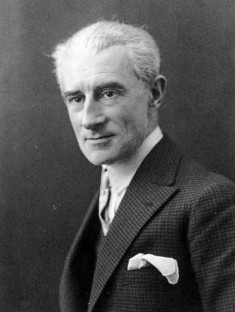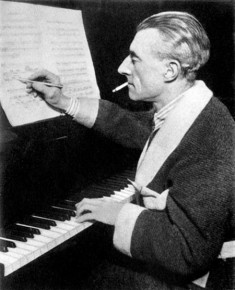| Maurice Ravel | |
|---|---|
 |
|
| Composer | |
| Specialty | Piano, chamber, vocal, orchestral music |
| Born | Mar. 7, 1875 |
| Died | Dec. 28, 1937 |
| Nationality | French |
Joseph Maurice Ravel was a famous French composer. He is best known for his great melodies, orchestral, and instrumental textures. Together with Claude Debussy, Maurice is said to be one amongst the most prominent figures associated with Impressionist music. Most of the piano music, vocal music, chamber music and orchestral music that he composed has actually entered the standard concert repertoire. Today, Maurice is best known for his 1928 orchestral work entitled Bolero
Early Life
Maurice Ravel was born on March 7, 1875, in France near Biarritz. His father, Joseph Ravel, was a Swiss inventor from French while his mother was of Basque descent and grew up in Madrid. Some of Joseph’s inventions included the early internal combustion engine and a circus machine. Joseph loved taking his children to factories to see and learn from the latest mechanical devices. He was also very interested in culture and music. As a child, Maurice is said to have been very sensitive in every kind of music.
Maurice was very close to his mother and her Basque-Spanish heritage had a very strong influence on his love for music. Some of his earliest memories include folk songs that his mother sang for him. Three months after Maurice’s, the family moved to Paris where his father became an engineer. When Maurice Ravel turned six, he started piano lessons and received his first instruction in harmony counterpart and composition with Charles-Rene. In 1889, at the age of 14, he had his first public piano recital.
Although he was talented in piano, Maurice preferred composing. He was also able to meet Ricardo Vines and the two became best friends. Ricardo actually became the first interpreter of his piano music, and he served as an important link between Ravel and Spanish music.
Early Career
Maurice’s parents encouraged him to pursue music and later sent him to the Conservatoire de Paris. At first, he was a preparatory student, but later he became a piano major. He was awarded first prize in a piano student competition in 1891. In 1893, he created his earliest music composition and he was also introduced to Erik Satie, a pianist whose musical work had proved to be very influential.
In 1900, Maurice joined a number of poets, young artists, musicians and critics referred to as Apaches (hooligans). This group met regularly until the beginning of the First World War. The members of the group often inspired each other through intellectual arguments and performances. During his time at the Conservatoire, Maurice tried several times to win the prestigious Prix de Rome, but with no success. In the 1890s, Ravel met Debussy whose music was very influential among young musicians.
Ravel’s Major Works
 In 1905, Maurice Ravel’s piano composition entitled Miroirs (Mirrors) became a great success. Five piano pieces marked a harmonic evolution with one commentator describing it as intensely descriptive and pictorial. His next work was Nature Stories, which was five humorous songs that evoked the presence of five animals.
In 1905, Maurice Ravel’s piano composition entitled Miroirs (Mirrors) became a great success. Five piano pieces marked a harmonic evolution with one commentator describing it as intensely descriptive and pictorial. His next work was Nature Stories, which was five humorous songs that evoked the presence of five animals.
Two years later, Maurice completed his Rapsodie espagnole, which was his first major Spanish work. This was first written for piano for four hands and later scored for an orchestra. It premiered in 1908 with good reviews.
Ravel’s later works included Le Tombeau de Couperin in 1907 and he was later commissioned by Sergey Diaghilev to create the ballet Daphnis et Chloe, which was completed in 1912. In 1920, after eight years, he completed La Valse, whichs was a piece with varying credits as concert work and ballet.
Final Years and Death
In 1932, Maurice Ravel suffered a major blow to his head after getting involved in a car accident. At first, this injury was not considered serious. However, afterwards, he started experiencing aphasia-like symptoms and was at times absent-minded. He also started experiencing early sated of Pick’s disease.
With time, he was unable to compose and could not even write down the musical ideas he had his mind. In 1937, he consented to experimental brain surgery. When he woke up from surgery, he asked for his brother, but he quickly sank into a deep coma and never woke up.
On December 28, 1937, Maurice Ravel died at the age of 62.